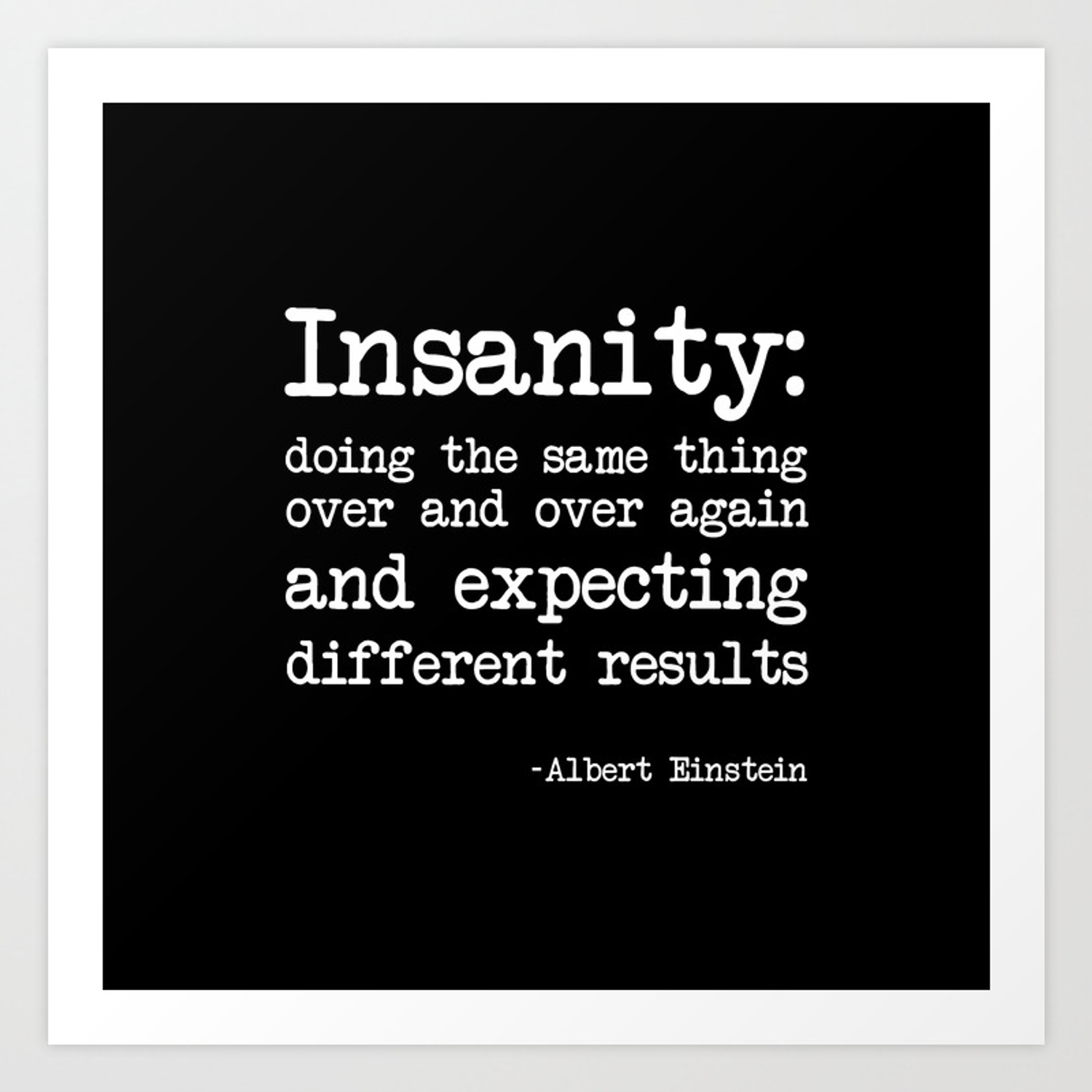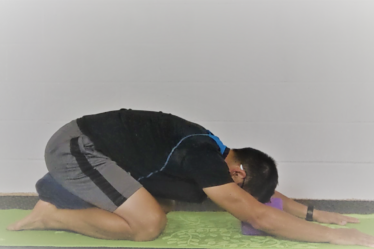
They say that the definition of insanity is doing the same thing over and over again and expecting different results. While this may be true in a lot of circumstances, I don’t find it to be accurate when it comes to having a consistent yoga practice. Particularly the type of yoga that I am currently practicing.
From the outside, the Ashtanga Yoga method seems pretty rigid and very intense. And it is. There are very strict rules about the number of days you practice, when you practice, and there is a set sequence of postures that you are to repeat. Every day. Over and over and over again. You are literally supposed to do the same thing over and over again, and here’s the kicker: if you DO, you will absolutely find different results. Maybe not every day, but quite possibly.
Your body is different every day. Your practice can vary based on the tiniest things from what you ate the day before (how much, how late, how salty, etc) to how much sleep you got, to your emotional state. Are you feeling energetic and motivated? Are you depressed and dragging yourself kicking and screaming to your mat? Are you distracted by your thoughts and drifting away from the practice? So many factors play a role in what your mind/body feels like even while doing the same repeated poses — and THOSE FACTORS ARE HOW WE LEARN THE LESSONS! That is how we learn about ourselves — the inner workings of our own minds, the tiny tweaks and adjustments we can make here and there to create a new sensation, a different alignment.
It may not feel like this in the beginning, when you are just learning the sequence. You spend a lot of mental energy just remembering the order of the poses, trying to get yourself from one posture to the next the “right” way, etc. However, once you’ve memorized the order, and you’ve built up the muscle memory, your body just takes over. Your body knows where it’s going and the rest just falls into place. It becomes meditative. Your attention and awareness can move inside, perhaps beginning to learn about the nature of your own mind. Your own thoughts. The shapes your body is making, the sensations you are feeling, the movement of the breath — all of this is the container. Holding the space for whatever new thing will arise that day.
My greatest joy recently has been watching my students begin to experience this as well. I began teaching an Ashtanga “style” flow class in January 2021. Now, 6 months later, those students who have been consistently coming to class each week, are beginning to have that muscle memory. They know where their bodies are heading and they move into shapes without waiting for me to say what comes next. They are moving with their own breath. Some linger in a posture for longer, knowing they can catch up later. Some skip poses and take the time for a more lengthy set up of a posture they want to work on more deeply. I can’t be certain what is happening INSIDE their bodies, or INSIDE their minds of course, but from the outside looking in, it appears as if they have taken agency of their own bodies and their own practice. I’m still holding the space for them, holding that container, but they are choosing the shapes and the forms. They are choosing how they will fill that space. It’s beautiful.
Sometimes I look at the screen with all of its tiny zoom boxes, and it’s like looking at a Mysore room. Something I haven’t stepped foot in for over a year due to Covid, but definitely something I miss. I mentioned in a very early post (Ashtanga vs Vinyasa Yoga) that I’d come back to the idea of the Mysore room. The Ashtanga method (the six series, the set sequences, all the rules, etc) was designed to be taught in a specific way. It begins with an experienced teacher and a dedicated student. This system isn’t for the faint of heart or for a casual practitioner. You must be dedicated and committed to the process.
An experienced teacher will open up the practice space for a set period of time. Within that time frame students may come and go, may begin and end their individual practice when it works for them. When a student arrives they begin their practice on their own and take themselves through the series up to the last pose they have been taught or “given” by the teacher, eventually ending their practice with a resting pose (savasana) even while others may be mid-practice. There may be 10-15 students in the room with one teacher, and no one is really at the same point in their practice (that’s those tiny zoom boxes with everyone doing their own thing — in a space/container being held by the teacher).
Along the way, the teacher moves from student to student offering guidance, tips, adjustments, and teaching new postures to those who are ready. Some students progress quickly – especially if they have prior yoga experience. Others need more time to memorize the sequence or to work on “gateway poses” (poses that requrie a certain level of proficiency in order to be able to safely practice postures that follow in the sequence). It’s almost like personal training for yoga. A skilled teacher can watch the bodies and listen to the breath of ALL the students and knows when to add a new posture, or what modifications to try if something isn’t coming.
And the energy. Oh, the energy in the room is intense but so lovely. That’s the one thing that zoom cannot replicate. There is something about being in a room with 10 or 15 or 100 other students moving and breathing in the same space. It gives you that extra push that you need sometimes to put in just a little bit more effort. Your focus and attention should be on your own mat and your own practice, but of course we are human. Our minds wander and so do our eyes and our ears — but maybe we can learn something from what we see and hear. It’s all a learning experience and a process.
The real beauty of this system is that it teaches a student how to have a SELF practice. In fact, not every Ashtanga practitioner has access to a Mysore-style teacher or Mysore room on a regular basis (or perhaps ever), and if Covid taught us anything, it’s that we CAN practice on our own. Adding poses when we know it’s right — based on books, and videos, and led (zoom) classes, and maybe asking a teacher to look at a video you took. We have all found ways to make do this year, and this is no exception.
And really, it’s not about the poses. It’s not about the sequence. It’s not about the teacher or the room. The real lessons from all of this come from showing up, doing the work, and taking the time to reflect on it all.
Every. Single. Day.
Lather. Rinse. Repeat.



[…] believe I had been practicing Mysore style Ashtanga Yoga for about 5 months when school started up again in the fall for my kids. I had been blissfully […]